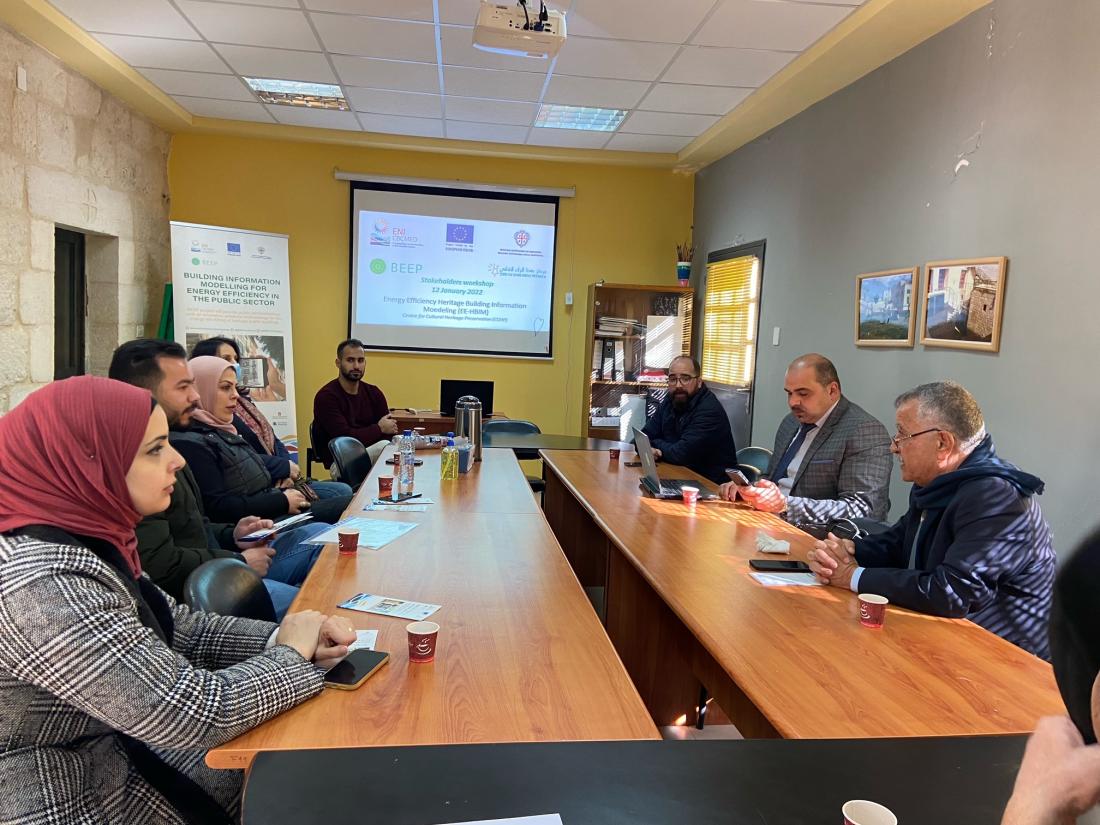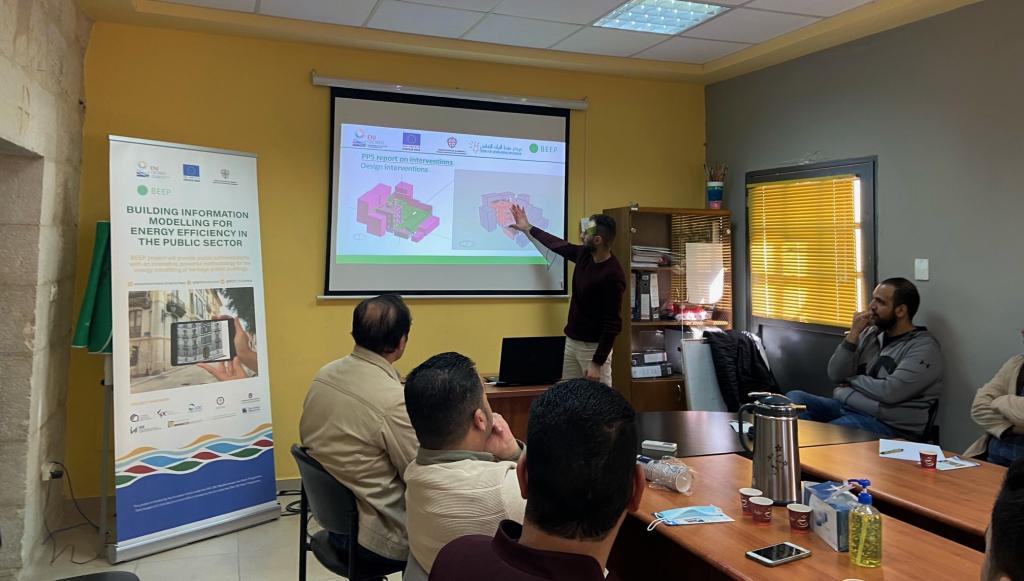BEEP in Palestine shares plans for the energy renovation of the Morcos Nassar Palace in Bethlehem

The Centre for Cultural Heritage Preservation (CCHP) together with the Palestinian Solar Sutainable Society (PALSSES) held a workshop on 12 January 2022. Participants from the local Steering Committee: Palestinian Energy and Natural Resources Authority PENRA, Environmental Quality Authority, Ministry of Tourism and Antiquities, Ministry of Labour, Ministry of Local Government, NGOs, and Private Companies attended the workshop.
Mr. Issam Juha opened the workshop by welcoming the guests. He gave a speech about the BEEP project, highlighting the main achievements of the project in terms of energy efficiency applied to existing heritage buildings.
Mr. Anwar talked about the Palestinian pilot building, the Morcos Nassar Palace, in Bethlehem, where two rehabilitation scenarios have been envisaged. In the short term, the plan is to improve the thermal insulation, introduce shading elements, replace the fluorescent lamps with LED and install renewable energy systems for electricity production and hot water generation. In the medium term, it is planned to replace the existing glazing with triple clear glazing and to install an efficient cooling system.
CCHP engineers, Mr. Eyad Abo Zalaf and Mr. Yazan Shamroukh explained in detail why these energy measures had been chosen and the relevance of preserving the heritage value of the pilot building.
There was also time to present the Energy Performance Contracting (EPC) model developed in Palestine and attendees discussed the opportunities, challenges, and barriers under the current legislation.
The dissemination of results of BEEP project was a success and the attendees showed their support both for the use of BIM methodology in public heritage buildings and for Energy Performance Contracts as a way to finance their energy refurbishment.

About the BEEP project:
BEEP project aims at strengthening the use of Building Information Modelling (BIM) to enhance energy efficiency in buildings. The testing of this emerging technology on built heritage will be performed to demonstrate its scalability to the entire building stock. The project will provide public administrations with a powerful method for the energy rehabilitation of public buildings to be supported with private funds through the Energy Performance Contracting (*). The project main outcome will be an innovative methodology based on the integration of emerging technologies tested on 9 heritage public buildings located in Italy, Spain, Cyprus, Jordan, Palestine, Lebanon, and Egypt.
(*) Energy performance contracting (EPC) is a mechanism for organising the energy efficiency financing. The EPC involves an Energy Service Company (ESCO) which provides various services, such as finances and guaranteed energy savings. The remuneration of the ESCO depends on the achievement of the guaranteed savings. The ESCO stays involved in the measurement and verification process for the energy savings in the repayment period. ESCO and energy performance contracting are mostly found in the public sector and to a lesser extent in the industrial and commercial building sectors (Hilke and Ryan, 2012). Source: European Comission
Follow BEEP project: Web, Facebook, Twitter







